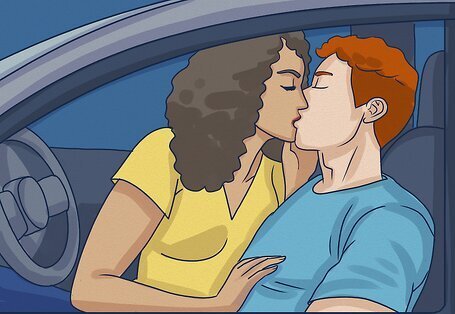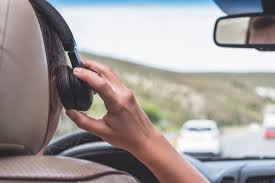DISTRACTED DRIVING
Interaction with an Opposite-Sex Partner

1. What is this Type of Distracted Driving?
- Definition: Driving while being distracted by an opposite-sex partner in the vehicle, including conversations, arguments, flirting, or attention-seeking behavior.
- Why it’s dangerous: It diverts your eyes, hands, and mind from driving, reducing focus on the road and increasing the risk of accidents.
2. How It Affects Driving
- Visual Distraction: Looking at the partner instead of the road.
- Manual Distraction: Gesturing, holding hands, or adjusting controls because of interaction.
- Cognitive Distraction: Thinking about the conversation, emotions, or conflicts instead of focusing on driving.
This type of distraction combines multiple forms and can be as dangerous as using a phone or drinking alcohol while driving.
3. Risks and Consequences
- Reduced attention to traffic, signals, and road hazards.
- Increased likelihood of sudden braking, swerving, or collisions.
- Arguments or emotional discussions can escalate reaction times and impair judgment.
- Accidents can cause injuries, fatalities, legal penalties, and emotional trauma.
4. Safe Driving Practices
- Keep conversations calm and brief while driving.
- Avoid physical distractions (holding hands, adjusting partner-related items).
- Focus on the road; emotions or arguments should be addressed after stopping.
- Use pull-over stops if a serious conversation is necessary.
- Set boundaries with the passenger for safe driving.
Tip: A safe driver prioritizes the road above social interaction inside the vehicle.
5. Self-Reflection Questions
- Have you ever been distracted by a partner while driving?
- How did it affect your reaction to traffic or hazards?
- What strategies can you use to prevent distraction from a passenger?
6. Quick Self-Check Quiz
- Name two ways interaction with a partner can distract a driver.
- True or False: Emotional conversations are safe while driving.
- What should you do if a partner starts distracting you while driving?
Answers:
- Visual distraction (looking at them), manual distraction (gesturing, holding hands), cognitive distraction (thinking about conversation/emotions).
- False – they can impair focus and reaction time.
- Politely ask to pause the conversation or pull over to continue it safely.
7. Key Takeaways
- Interaction with a passenger can be a serious driving distraction.
- Safety comes first: the road requires full attention.
- Address conversations, conflicts, or attention-seeking behavior only when the vehicle is stationary.
Remember: Eyes on the road. Hands on the wheel. Conversation later.
Related Tutorials

DISTRACTED DRIVING
Emotional Distraction
1. What It IsEmotional distraction occurs when strong feelings—anger, sadness, stress, e...
Read More
DISTRACTED DRIVING
Wearing or Adjusting Headphones/Earbuds
1. What It IsAdjusting headphones or earbuds while driving is a form of manual and visual ...
Read More
DISTRACTED DRIVING
Dealing With Children or Pets
1. IntroductionChildren and pets can create sudden, unpredictable distractions inside a ve...
Read More